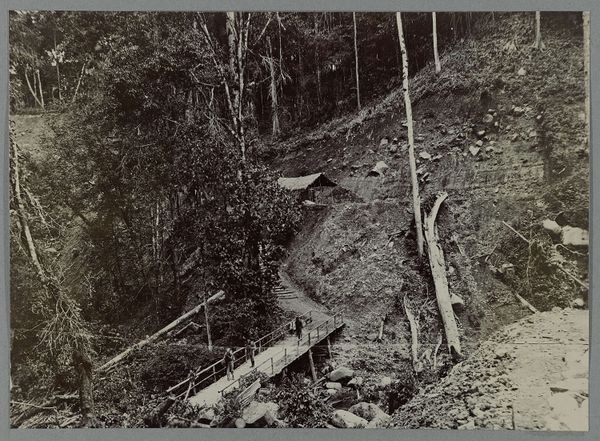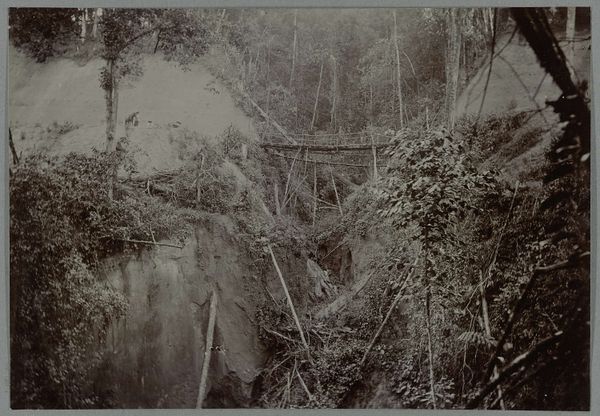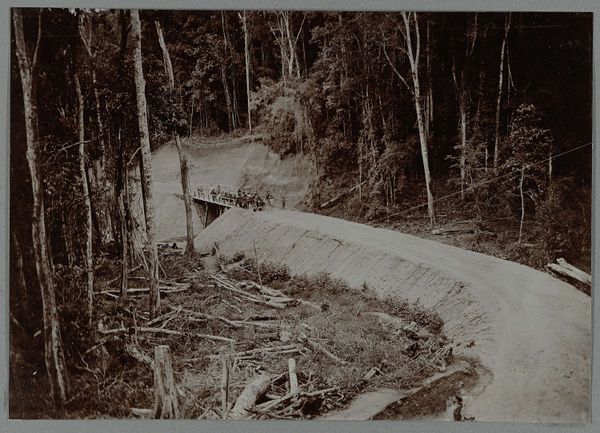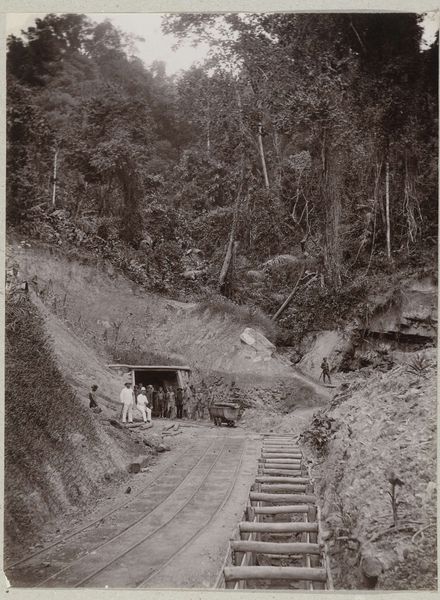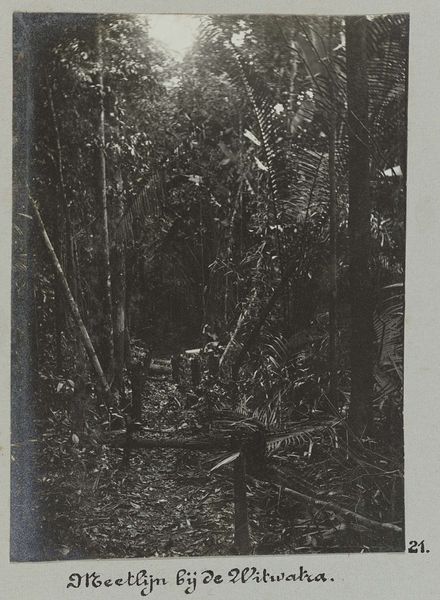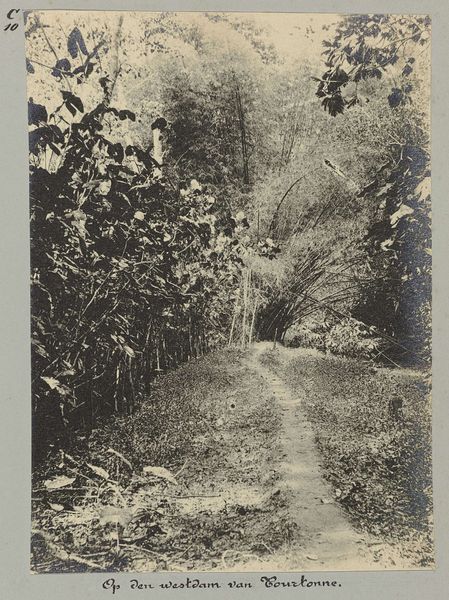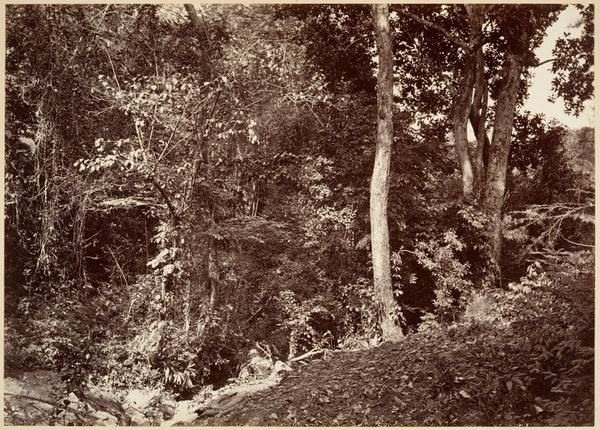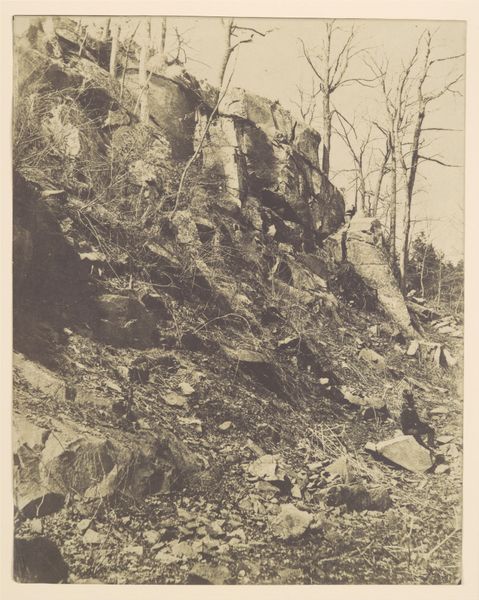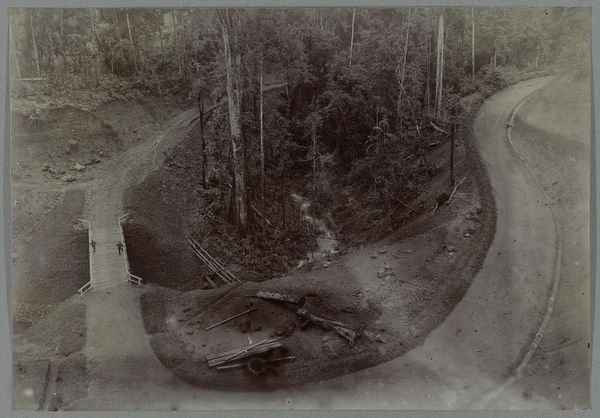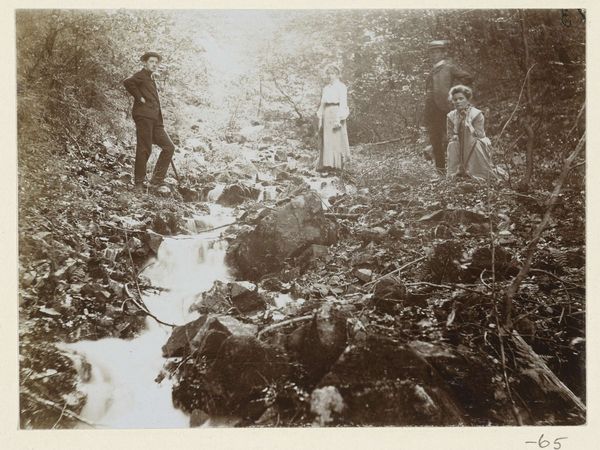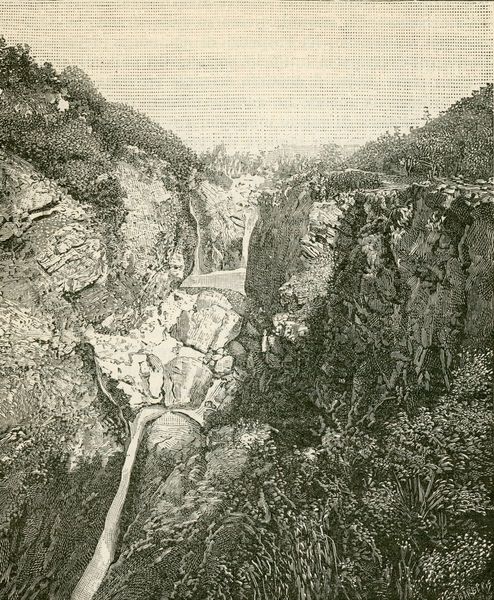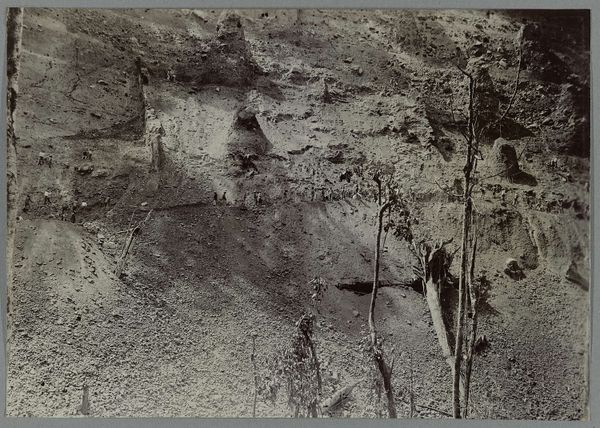
photography, gelatin-silver-print
#
landscape
#
photography
#
orientalism
#
gelatin-silver-print
#
natural texture
#
realism
Dimensions: height 108 mm, width 82 mm
Copyright: Rijks Museum: Open Domain
Curator: This arresting photograph, titled "Booten op Ma retraite", was captured by Hendrik Doijer sometime between 1903 and 1910. It's a gelatin-silver print, typical of the period, showcasing an almost hyperrealistic depiction of a man seemingly at work within a rugged, earthen trench. Editor: The stark, earthy tones immediately evoke a feeling of labor and constraint, even. I find myself drawn into the image's vertical composition, the sense of depth created by that deep channel. It's oddly claustrophobic, but the human presence offers some scale. Curator: Doijer’s lens offers a complex visual language of the landscape in the early 20th century. Beyond its realist style, there are whispers of what we understand as Orientalism—specifically its exoticized views on labor, technology and nature during that time. Notice how the vegetation crowds the frame's upper portion, symbolizing the untamed, dense tropicality typical in the representation of colonized landscapes. Editor: Absolutely, it’s fascinating how the wildness above contrasts so sharply with the structured channel carved into the earth. That human figure is positioned almost centrally, emphasizing their role within that landscape's narrative. The contrast certainly underscores power dynamics—nature versus man, wild versus controlled. The poles with hanging fabric near the channel serve as some form of survey marker. It certainly points to land as something that can be measured and ultimately owned, changing a landscape. Curator: Precisely. Moreover, gelatin-silver prints like these gained popularity partially because of their permanence—their capacity to immortalize these fleeting colonial moments. In my view, "Booten op Ma retraite" acts almost like an immutable record of progress, indelibly fixing our idea of a cultural exchange—specifically where the nature of labor is concerned— into history. Editor: It does raise difficult questions about historical visual narratives. While beautiful and richly textured, it forces us to engage with complex colonial legacies. I am left wondering about what the human subjects of those photographs might say. Curator: It's those enduring paradoxes which are central to interpreting this image, to unpack not just what it depicts but also why and how it was made, which makes me pause and consider it all the more.
Comments
No comments
Be the first to comment and join the conversation on the ultimate creative platform.
